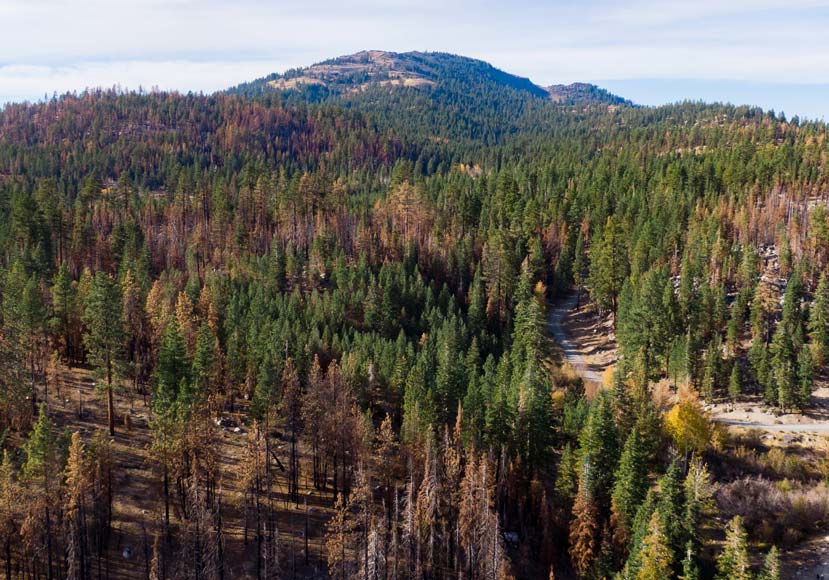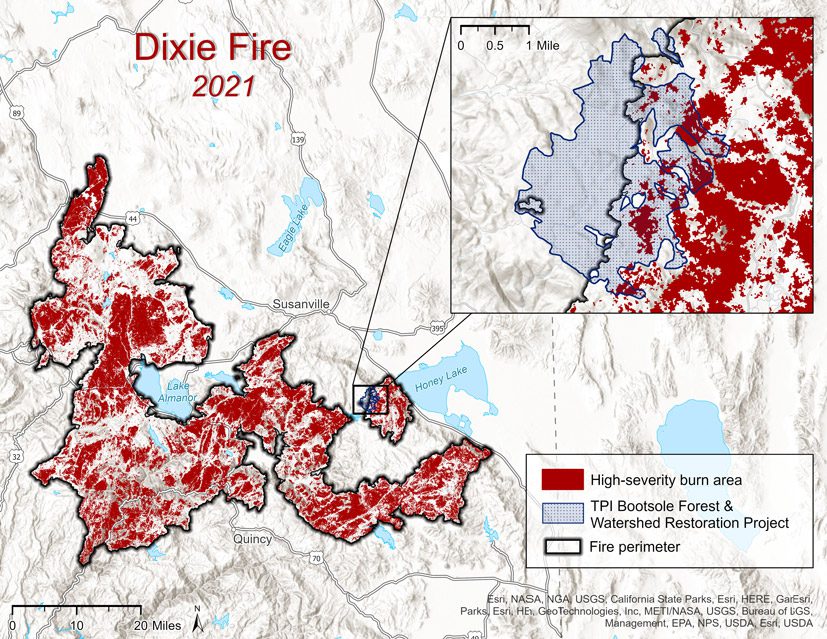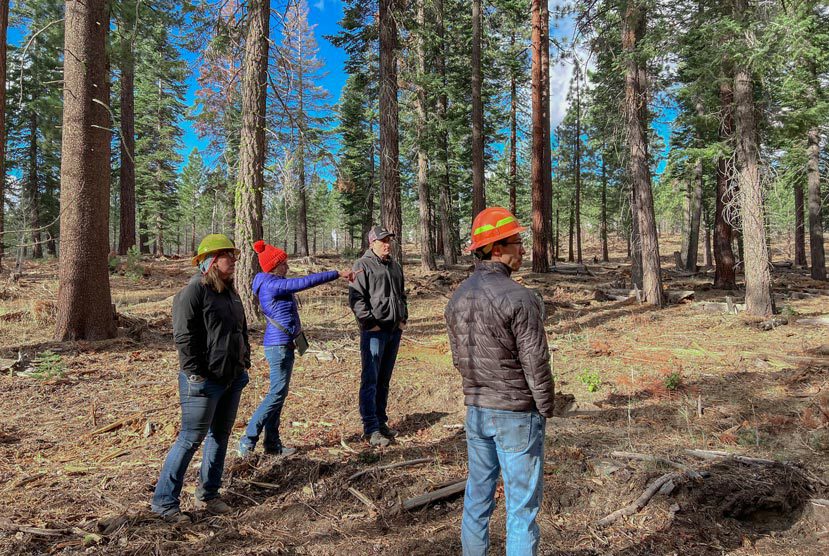In response to a record-breaking fire season in 2020, the California legislature issued millions of dollars to state agencies in May 2021 to immediately start forest-health and fuels-reduction work to help prevent another devastating wildfire season. In July that same year, Sierra Nevada Conservancy (SNC) worked to efficiently and effectively invest in 15 shovel-ready projects across the Sierra Nevada.
One of these critical efforts was the Thompson Peak Initiative Bootsole Forest and Watershed Restoration Project, led by the Lassen Fire Safe Council, which will remove excess fuels on nearly 3,800 acres of Plumas National Forest land. To date, the $3.7 million grant is the largest single Watershed Improvement Program grant awarded in SNC history.

“A priority for the Forest Service is to increase the pace and scale of forest treatments because wildfires are becoming larger and more destructive year after year,” said Dwight Clark, acting timber management officer for Plumas National Forest, Beckwourth Ranger District. “There are a lot of challenges to that, but with the Lassen Fire Safe Council and the Sierra Nevada Conservancy, having those partners in place to acquire money through grants, allows us to accomplish these things on a much faster scale.”
So far, the project has conducted mastication on just under 250 acres throughout the project area and is moving into the mechanical- and hand-thinning phases. The project would be further along, but the 2021 field season was lost due to the Dixie Fire burning through much of the Plumas National Forest. This forced organizers to revisit, reassess, and adjust their original plans to take advantage of beneficial wildfire impacts in the project area.
Dixie Fire impacts added to treatment plans
While California’s largest single-source fire did in fact burn almost 45 percent of the Bootsole project area, the fire effects were much less severe than many other areas impacted by the Dixie Fire. Within the project area, roughly 25 percent burned at high severity, a measure of fire effects that indicates all or nearly all trees were killed. That’s compared to almost 50 percent high severity across nearly 1 million acres burned by the Dixie Fire.
This outcome was extremely encouraging and left behind a mosaic of effects that project organizers incorporated as they revised their treatment plans.

“One of the things we wanted to incorporate with this project was more structural heterogeneity. More openings and clumps of trees,” said Kristen Winford, silviculturist for Plumas National Forest, Beckwourth Ranger District. “In Bootsole, it’s kind of mixed severity how it burned through. In some places it burned too hot and took out some small pockets of trees, in some areas, it burned through with just a nice underburn. The fire provided that heterogeneity for us at a landscape level.”
The Dixie Fire did some beneficial work across the landscape, but there is still a lot of work to be done. Not only was more than half of the project area unchanged by the fire, but clean up, mastication, and additional fuels reduction are still needed in sections of the burned portion. According to Winford, the project is still full steam ahead with only slight adjustments needed.
Bootsole project set to accomplish wildfire resilience goals
Returning forest structure to a state that is resilient to future disturbances, such as wildfire, insect outbreak, disease, and climate change are primary goals of the state’s historic wildfire and forest resilience budget.

Despite the Dixie Fire, this remains the goal of fuel-reduction work completed by the Lassen Fire Safe Council and the Plumas National Forest’s Thompson Peak Bootsole Forest and Watershed Restoration Project.
“We are lucky that it all didn’t burn at high severity because there’s that potential for that to happen. It would have been sad to lose everything, but I’m really excited by how this area looks,” Winford said. “You have the pines still, you have the reduced fuels, and you still have the aspens. I’m really excited by what I see and excited to see more (once the project is complete).”
Cade Mohler, managing director of the Lassen Fire Safe Council, concurred.
“This has been a success despite all the challenges,” he added, pointing to an area that was recently masticated by contractors. “If a wildfire were to come through here again, hopefully it simply provides maintenance. The severity would be low and simply clean up some of the fuels left behind.”
